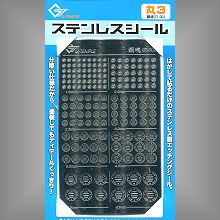

New moms and dad return to the course season after season with new motivations. It’s a pretty special thing that we get to watch people find their footing on American Ninja Warrior and then grow as both athletes and parents. And for that we say thank you, more please.Īside from just being absolutely delicious to look at, these little wonders illustrate just how this sport lends itself to families. There are a lot of fresh babies in the American Ninja Warrior community right now.
#Sumo baby ninja warrio full
Retrieved July 29, 2020.WARNING: This post is full of babies who rank very, very high on the cuteness scale. "Sumo Wrestlers Bring Babies to Tears as Part of Centuries Old Festival". "Naki Sumo: Japan's Crying Baby Contest". "Sumo wrestlers bring babies to tears at Japan's Nakizumo festival".

Īs a consequence of the COVID-19 pandemic in Japan, many Naki Sumo Festivals scheduled for spring 2020 were cancelled or postponed until fall. CNN interviewed a Japanese-American couple who flew from New York to attend the festival in Asakusa in 2010. While the majority of participants are Japanese, some foreigners have traveled to Japan to partake in the festival. Some locations are so popular that children are chosen by lottery, and parents will travel across Japan to find a place to participate.

#Sumo baby ninja warrio free
The festival is free and open to the public however, some shrines and temples require that parents submit an application or pay a fee to participate. Eligible competitors must be between the ages of 6 months and 18 months at the time of the festival. At the Gokoku Shrine in Hiroshima, babies are dressed in kimono and seated facing one another on pillows while a sumo referee encourages the babies to cry. When the babies begin to cry, the student sumos raise the babies higher in the air, which is believed to strengthen the blessing endowed on each crying child. The best-known Naki Sumo Festival is held each year in Asakusa, Tokyo, where student sumo wrestlers of the Sensō-ji temple hold the babies in their arms. At the end of each match, some families and spectators yell out the phrase banzai raku meaning "live long". In some versions of the festival, when neither baby has cried for a number of minutes, referees or judges donning traditional Japanese masks approach the babies and attempt to scare them. Sumo wrestlers employ a variety of techniques to encourage crying, including bouncing the baby in their arms, making loud noises and funny or scary facial expressions, and chanting " Naki! Naki! Naki!" ("Cry! Cry! Cry!" in English). If both children cry simultaneously, the baby with the louder or longer cry is typically the victor. The first child to cry is declared the winner and bestowed with a blessing of good health.
#Sumo baby ninja warrio professional
Two babies at a time compete in short matches, while held in the arms of professional or student sumo wrestlers. Next, the crying baby competition is held outdoors in a handmade sumo ring. The staff at the shrine hand-make four-pronged kabuto helmets for each participant to wear during the crying competition and create commemorative gifts and souvenirs for the parents. Ī Shinto priest opens each festival with rituals to pray for the healthy growth of each baby. The specific customs and traditions of each festival vary by location, however the main focus of every festival is a ritualistic prayer for the good health of each baby and a competition between infants held in a sumo wrestling ring. The Naki Sumo Festival is held annually at Shinto shrines throughout Japan, most commonly on or around May 5 to coincide with Children's Day at the end of the Golden Week holiday. The winning child is raised high in the air by a sumo wrestler at the Sensoji Temple in Asakusa, Tokyo.


 0 kommentar(er)
0 kommentar(er)
